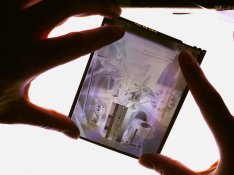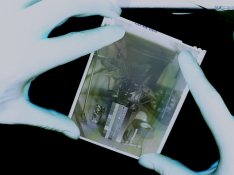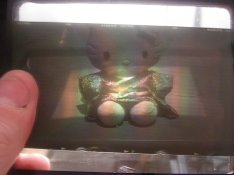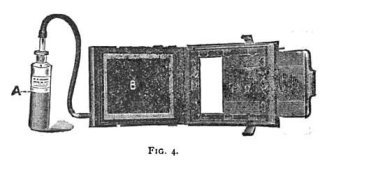Hello guys
I don't want to hijack the thread, but I just wanted to show you the latest results with the lcd screen and tmx100 film. Sorry about the size,but this machine doesn't have anything on it to edit the photos . Alignment seems to be the big problem, compounded by the screen mounted in the plateholder, which makes it difficult to hold.
I was using xylene to bond the film and screen for viewing; it has the advantage of not getting the emulsion wet, and evaporates away. You would need something like kerosene or light mineral oil to hold the film for actual taking of the pictures, because it will stay around longer.
I see you've been laboring away at this too,Chris-- good work
and like any good photographer I manage to get my thumb in the picture
rob
P.S. I just realized that I could load the screen cassette with regular e-6 film ,take a picture of a piece of white cardboard on a sunny day or with flash, and make myself as many screens as I wanted. No CDU needed.




 ) reversal processed negative ended as a complete and utter failure. I've noticed a strange phenomenon when an E6 transparency gets wet, it develops a strange green fog that doesn't disappear until it's dry again. And gelatin mixed with water would certainly exhibit this as well, migrating into the emulsion layer. If this fog was present at exposure, it would have resulted in severe underexposure, which would explain why my positive was as dense as
) reversal processed negative ended as a complete and utter failure. I've noticed a strange phenomenon when an E6 transparency gets wet, it develops a strange green fog that doesn't disappear until it's dry again. And gelatin mixed with water would certainly exhibit this as well, migrating into the emulsion layer. If this fog was present at exposure, it would have resulted in severe underexposure, which would explain why my positive was as dense as 






